#1894
Explore tagged Tumblr posts
Text

"Insectivorous plants Sundew and Butterwort." The natural history of plants. 1894.
Internet Archive
1K notes
·
View notes
Text

Heir to Austro-Hungarian Empire, Franz Ferdinand and his spouse Sophie dressed as a Mummy and a Sphinx respectively during their trip to Egypt in 1894.
#reddit#snapshothistory#us_against_the_world#franz ferdinand#sophie ferdinand#mummy#sphinx#photography#tourist#vacation#1894#egypt#travel#b&w#1890s#1800s#same as it ever was#history#hungarian#later they were assassinated#the assassinations were pivitol to the start of wwi
285 notes
·
View notes
Text

submitted by @dewdropsongrasss 💚❤️🤍
#historical fashion poll submission#historical fashion polls#fashion poll#historical dress#historical fashion#dress history#fashion history#fashion plate#19th century#19th century fashion#19th century dress#late 19th century#1890s dress#1890s fashion#circa 1890#1890s#circa 1894#1894#costume
242 notes
·
View notes
Photo
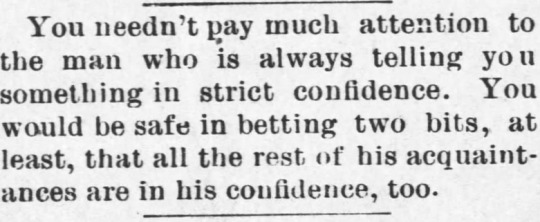
The Coffeyville Weekly Journal, Kansas, May 18, 1894
530 notes
·
View notes
Text

“Tiffany Aching was lying on her stomach by the river tickling trout. She liked to hear them laugh. It came up in bubbles.” —Terry Pratchett, The Wee Free Men
As soon as I saw The Little Fishergirl by Lucien Pissarro, I thought of Tiffany tickling trout and listening to their bubbling laughter.
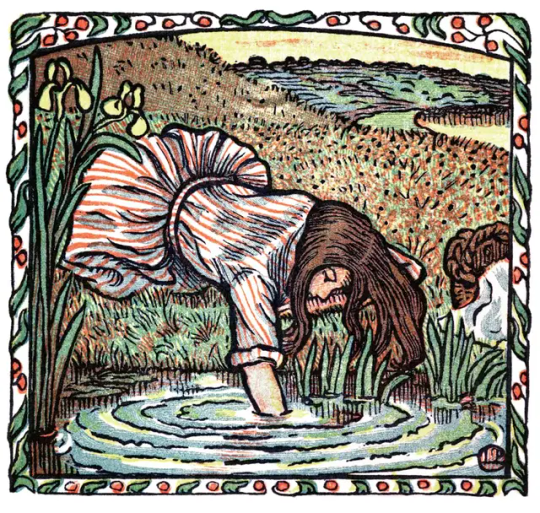
The Little Fishergirl Lucien Pissarro 1894
Here’s another variation of the Tiffany Aching version at the top of the post:
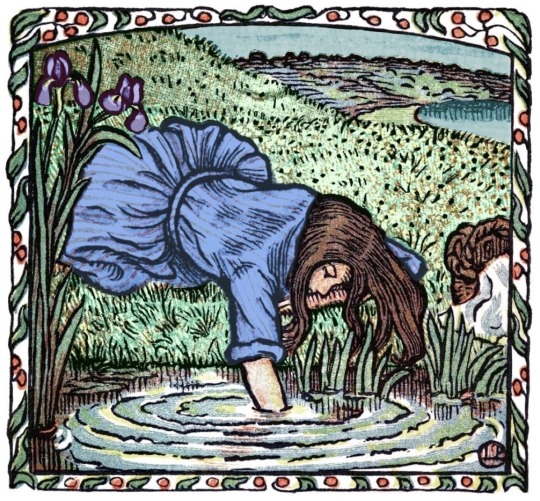
#discworld#gnu terry pratchett#meme#discworld meme#created by yours truly#tiffany#tiffany aching#the wee free men#witch#history#19th century print#art#19th century#1890s#1894#art history#art history meme
408 notes
·
View notes
Text
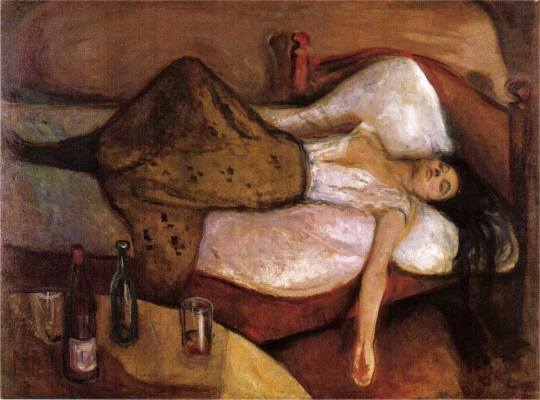
Edvard Munch, "The Day After", 1894-95
1K notes
·
View notes
Text

Green velvet dinner dress, 1894-1896, French.
Designed by Jeanne Hallée.
Met Museum.
#Jeanne Hallée#velvet#green#womenswear#extant garments#dress#silk#19th century#met museum#1890s#1894#france#1890s extant garment#1890s dress#1890s France#dinner dress
986 notes
·
View notes
Photo
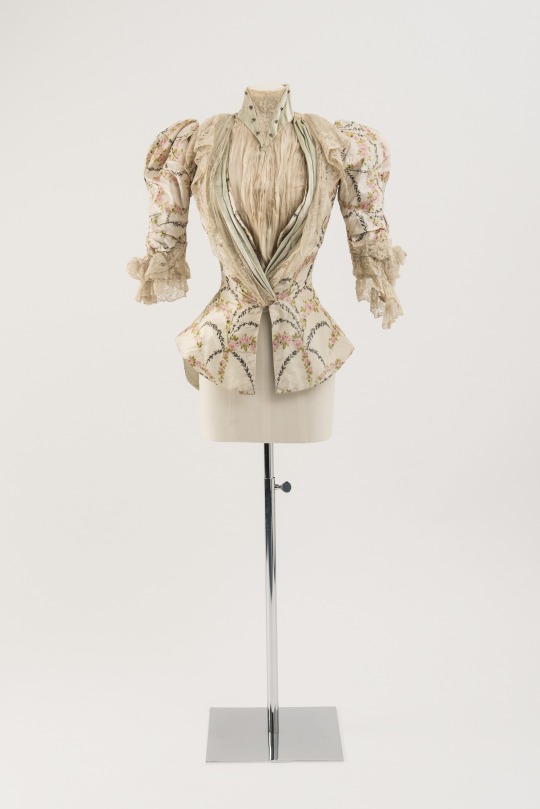
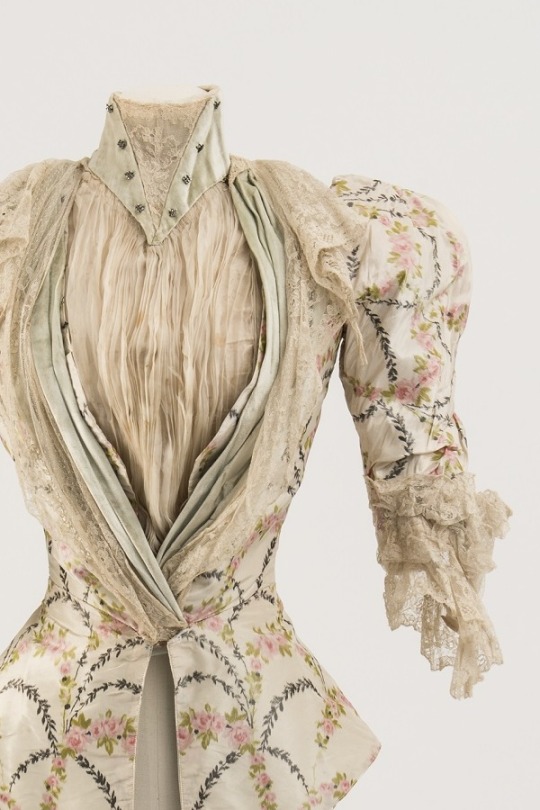
Bodice
House of Worth (French)
Mid 1890s
Fashion Museum Bath via Twitter
#bodice#fashion history#historical fashion#1890s#turn of the century#belle epoque#worth#house of worth#1894#1895#1896#floral#flower print#off white#silk#france#fashion museum bath#popular
2K notes
·
View notes
Text

Sacrificial feast in the Sudnozero/Venehjärvi village,Kemskiy uyezd of Arkhangelsk governorate (1894)
Photo by Konrad Inha (1865-1930)
#Россия#Russia#vintage#photography#карелы#karjala#karjalaiset#karjalan#karelian#karelians#Архангельская губерния#Arkhangelsk governorate#Konrad Inha#finnish photographer#photographer#Europe#traditional#history#photo#european#folk#traditions#black and white#vintage photography#1890s#1894#19th century
206 notes
·
View notes
Text

Luxuriant peacock feather desighn.
Pride and prejudice. 1894.
Internet Archive
#book cover#covers#peacock feathers#graphic design#jane austen#book design#nemfrog#1894#19th century
959 notes
·
View notes
Text

Evening Dress, made in Paris, 1894
From the Victoria & Albert Museum
601 notes
·
View notes
Text

Laughing Girl (1894) by Suzanne Valadon
69 notes
·
View notes
Text


#historical fashion polls#fashion poll#historical dress#historical fashion#dress history#fashion history#fashion plate#19th century#19th century fashion#19th century dress#late 19th century#1890s dress#1890s fashion#circa 1890#1890s#circa 1892#1892#circa 1894#1894#costume
257 notes
·
View notes
Text

Toulouse-Lautrec, The Salon In The Rue Des Moulins, 1894
84 notes
·
View notes
Text

La Mode illustrée, no. 4, 28 janvier 1894, Paris. Robe en drap et soie rayée. Modèle de chez Mmes Coussinet-Piret, rue Richer, 43. Ville de Paris / Bibliothèque Forney
La jupe ronde en drap léger est ouverte sur un tablier de soie rayée, bordé de chaque côté d'une ruche en drap; cette ruche se continue au bord inférieur de la robe en s'élargissant. Le corsage plat en drap, comportant derrière une basque longue plissée, est garni d'un gilet en soie rayée, dont les bords sont couverts par une veste en drap, formant empiècement au bord supérieur. Le col droit et la partie inférieure des manches sont en drap; le haut des manches est recouvert avec de larges bouillonnés de soie rayée.
The round skirt in light cloth is open on a striped silk apron, bordered on each side with a ruffle in cloth; this ruffle continues at the lower edge of the dress, widening. The flat bodice in cloth, with a long pleated basque behind, is trimmed with a striped silk waistcoat, the edges of which are covered by a cloth jacket, forming a yoke at the upper edge. The straight collar and the lower part of the sleeves are in cloth; the top of the sleeves is covered with large striped silk ruffles.
#La Mode illustrée#19th century#1890s#1894#on this day#January 28#periodical#fashion#fashion plate#description#Forney#dress#gigot#devant et dos#Modèles de chez#Madames Coussinet-Piret#one color plates#fav january
72 notes
·
View notes
Text

Raymonde Bonnetain
- ‘Mlle Renée Bonnetain jouant avec les crânes de sofas (soldats professionnels) de Samory, fusillés outre-Niger, après d’inutiles combats, pour la plus grande gloire – gloire & profit – de l’artillerie de marine’ / (Mlle Renée Bonnetain playing with the skulls of Samory’s sofas [professional soldiers], shot in the outre-Niger region, after some pointless battles, for the greater glory – glory & profit – of the marine artillery)
albumen paper, 16.5 cm × 11.2 cm
1894–5
It is sometimes quite difficult to see what a photograph actually shows. The picture can be so unusual that one can look at it for a while without understanding it. For many observers, the photograph by Raymonde Bonnetain on the cover of this book is such a picture. One has to take a second look in order to make sense of it. Raymonde Bonnetain was travelling through present-day Mali between 1894 and 1895 with her husband, Paul, who had been sent by the Ministry of Public Education in 1892 to study the indigenous populations. An amateur photographer, she took this bizarre photograph in a garden in Kayes. It shows her daughter, Renée, one of the first children of European origin to accompany colonisers to the region, sitting in the middle of a bed of skulls. The little girl is even holding a skull on her lap. The image is skilfully composed, and it clearly took some time to arrange the human remains. The child has put on her Sunday best and is wearing a hat for the photo session. A Western woman has taken the picture after giving instructions to her own daughter and surrounding her with skulls. Someone – probably Henry Sarrazin, a Veterinary Officer with an interest in anthropology – has collected these remains and given them to the photographer for this display. There is no reason to doubt that these skulls, transformed into decorative specimens, belonged to Samory Touré’s sofas (fighters) who resisted French encroachments. They were killed in the early 1890s in what is today the north of Guinea. Their individual names are lost, but Yves Person’s collection of interviews with surviving African participants in the conflict officers a rich local source on their histories. There are probably observers outside the frame. Servants may well be watching, aware of the desecration that is being enacted here on Africans. From these local angles, the image provides a disturbing illustration of the extreme imbalance that inhabits the colonial photographic archive.
Initially incomprehensible, this isolated photograph on the cover of a book is interpreted according to the preconceptions of those who see it. For some, the picture may confirm the extreme violence of conquest and the brutality of the Europeans who had come to colonise Africa. It may even be taken as evidence of a specific French inclination toward imperial violence in comparison with a supposedly more benign British approach to colonial administration. The photographer and her model seem to display a staggering degree of inhumanity. The bodies of the colonised have been brutalised twice: once in their death and now in this staged scene. Some will even find that the use of this image on the cover of a book reinforces this degradation. Others, overly concerned not to exaggerate the degree of force employed in French imperial expansion, will see a one-off, the temporary delirium of one woman, scarcely representative of the colonial process as a whole. A thousand readings are possible on an initial view of the photograph. Faced with an image taken out of context, our first interpretations of this macabre reflection of a colonial conquest are generally determined by our own initial points of view. Photography of physical violence automatically pushes us to interpret the image in such a way as to restore order and reassure us. As we come to the end of this book, however, we must ask readers to suspend their judgement and to see the fundamental opacity of this particular photograph.
As with any photograph, to discover what is really going on in this image one must first take the trouble to read the caption, in this case written on the back of the cardboard on which the albumen print is glued. Someone – doubtless Raymonde – has pencilled a long, ironic description. These skulls are those of Samory’s soldiers, who had been killed ‘for the greater glory – glory & profit – of the marine artillery’. They are the remains of enemies, executed at an unknown date and then collected by the French. The photographer is thus expressing a critical view of the military operations in the region of ‘French Sudan’. In her opinion, the war against Samory and the fresh campaigns ordered by Louis Archinard were unnecessarily aggressive. The local commanders pushed for conquest without always informing Paris. She disapproved of this and noted in a travel diary published on her return to France: ‘The honourable artillerymen, for their greater advancement in rank, are not at all anxious to finish things […] so much the worse for the blood and money of the country!’ The image and its caption are evidence of an acerbic critique of the strategic choices of those leading the operations. The image then takes on other possible meanings.
-- Daniel Foliard from The Violence of Colonial Photography, Manchester University Press, 2022.
#Raymonde Bonnetain#skull#albumen print#history of photography#1894#1895#19th century photography#The Violence of Colonial Photography#colonial photography#Daniel Foliard
53 notes
·
View notes